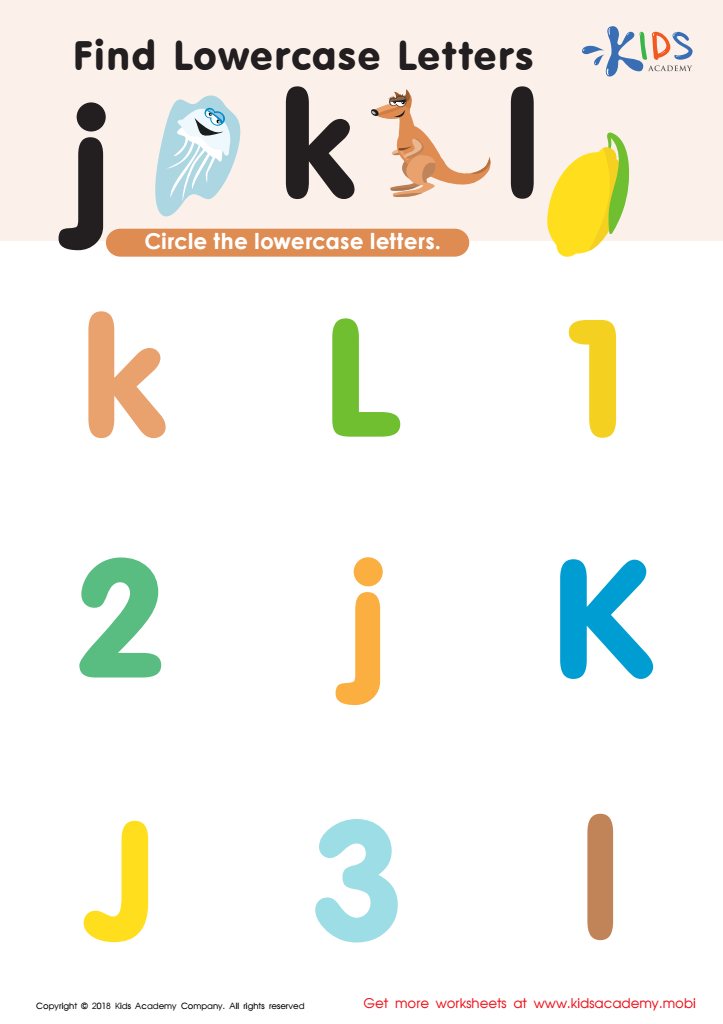Fine motor skills development Normal Upper & Lowercase Letters Worksheets for Ages 4-7
3 filtered results
-
From - To
Enhance your child's handwriting with our "Fine Motor Skills Development Normal Upper & Lowercase Letters Worksheets for Ages 4-7." These engaging activities are designed to help young learners master proper pencil grip while improving hand-eye coordination. Each worksheet offers fun tracing and writing exercises, featuring clear guidelines to practice both uppercase and lowercase letters. Perfect for preschoolers and kindergarteners, these tools promote confidence and skill in early writing foundations. Tailored to boost fine motor skills, our worksheets support academic readiness and are ideal for use at home or in any early education setting.


I Stands High Worksheet


Find Lowercase Letters j k l Worksheet


Uppercase Letters P, Q, and R Worksheet
Developing fine motor skills and the ability to write normal upper and lowercase letters are crucial milestones for children ages 4-7, forming a foundation for academic success and daily tasks. Fine motor skills involve the coordination of small muscles, especially in the hands and fingers, enabling children to perform essential activities such as buttoning a shirt, tying shoelaces, and, most important for their early education, writing and drawing.
When parents and teachers prioritize fine motor skill development, they enhance a child's ability to write neatly and legibly. This is fundamental for clear communication and builds confidence as children progress through school. Mastering proper letter formation helps children differentiate easily between similar-looking upper and lowercase letters, thereby boosting reading skills and comprehension.
Furthermore, these skills impact cognitive development; fine motor tasks promote focus, patience, and perseverance. They also prepare children for other academic subjects that require a solid foundation in writing. Poor fine motor skills could lead to challenges such as reduced academic performance and difficulty with classroom tasks that can hinder overall development.
In essence, nurturing these skills helps children develop independence and self-reliance, setting the stage for future learning and everyday activities. Therefore, attention to fine motor skill development and accurate letter formation covers both educational and practical aspects of a child's growth, making it an essential focus for parents and teachers.
 Assign to My Students
Assign to My Students












